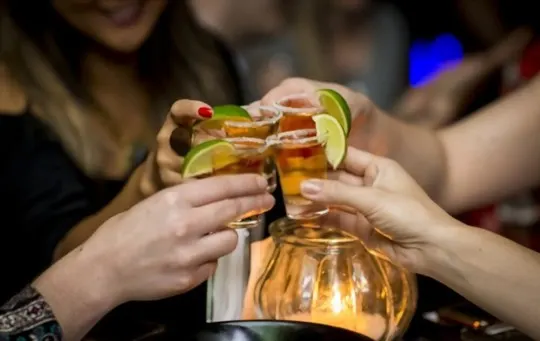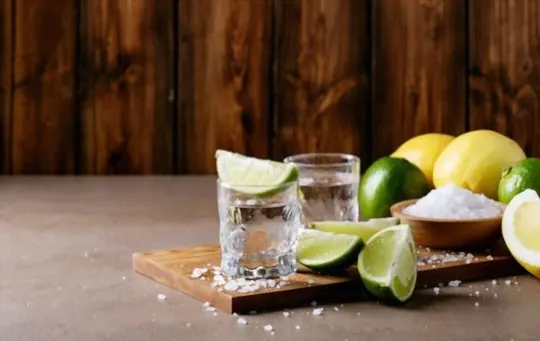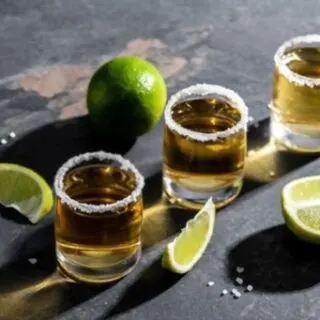Have you been to a party recently with lots of tequila around, and then wondered a few days later if the remaining bottles were still any good?
Or maybe you just opened up a bottle from the back of your cupboard and need to know whether it’s safe to drink or not.
Either way, one question that many people have about tequila is: how long does it last, and can it go bad?
In this blog post, we’ll answer those questions in an easy-to-understand way by exploring the shelf life of tequila as well as steps for making sure that yours stays fresher for longer.
We’ll also examine different types of damage that may affect its quality.
So if you’re curious about why top-shelf agave spirits don’t stay fresh forever – keep reading!
What’s Tequila?

Tequila is a distilled spirit made from the blue agave plant.
The plants are native to Mexico and have been used in the country’s traditional drinks for centuries.
Tequila was first produced in the 16th century and has since become one of the most popular alcoholic beverages in the world.
There are two main types of tequila: blanco, which is clear, and aged, which is brown.
Tequila can be enjoyed neat, on the rocks, or in cocktails such as Margaritas or Bloody Marys.
Despite its popularity, many people still don’t know much about tequila.
Here are some interesting facts about this iconic drink:
- Tequila is named after the town of Tequila in Jalisco, Mexico, where it was first produced.
- The blue agave plant takes around 10 years to mature before it can be used to make tequila.
- After the agave plants are harvested, their hearts (or piñas) are cooked and then crushed to extract their juice.
- Tequila must be made with at least 51% agave juice in order to be classified as such.
- It takes around 3 months for tequila to age in oak barrels before it’s ready to be bottled and sold.
How Long Does Tequila Last?

The answer to this question is both simple and complicated.
On the one hand, tequila doesn’t really “go bad” in the traditional sense.
It’s not like milk or bread where it will start to spoil after a certain amount of time.
However, tequila does change over time and it’s generally agreed that it’s best consumed within a year or two of being bottled.
There are a few factors that contribute to how long tequila will last.
First, tequila is made from agave plants, which contain a lot of sugar.
Sugar is an ingredient that doesn’t last forever and it will start to break down over time.
This process is accelerated by heat and light, so if you’re storing your tequila in a warm place or exposing it to sunlight, it will start to degrade faster.
Second, the type of tequila also affects its shelf life.
Blanco or silver tequilas are the most stable because they haven’t been aged in oak barrels.
Reposado and añejo tequilas have been aged for at least two months (and up to a year), which gives them a more complex flavor but also makes them more susceptible to degradation.
Extra añejo tequilas have been aged for three years or more and are even more delicate.
So how can you tell if your tequila has gone bad? The easiest way is to take a look at the color.
If your blanco tequila has started to turn yellow or brown, that’s a sign that it’s breaking down and you should probably discard it.
Reposado and añejo tequilas can also change color over time, but because they’re already dark, it’s harder to tell if they’ve gone bad.
The best way to judge these types of tequilas is by smell: if they’ve developed an off-putting odor, they’re probably past their prime.
In general, it’s best to consume your tequila within a year or two of buying it.
But if you store it properly (in a cool, dark place) and don’t expose it to too much heat or light, you may be able to extend its shelf life by a few months.
What are the Signs of Bad Tequila?

There are a few signs that your tequila may have gone bad.
The first is the color.
If your tequila has changed colors, it may be an indication that it has gone bad.
Another sign is the smell.
If your tequila smells off, it’s probably not good to drink anymore.
Finally, if your tequila doesn’t taste right, it’s probably best to discard it.
How Can You Prevent Tequila from Going Bad?
There are a few things you can do to prevent tequila from going bad.
First, be sure to store it in a cool, dark place.
Tequila should not be stored in direct sunlight or near any heat source.
Second, be sure to seal the bottle tightly after each use.
This will help keep out oxygen and other contaminants that could cause the tequila to go bad.
Finally, if you have an opened bottle of tequila that you are not using, be sure to finish it within a few months.
After that, the quality of the tequila will start to decline and it will eventually go bad.
What are Some Ways to Use Old or Expired Tequila?
There are a few ways that you can use old or expired tequila.
One way is to make a cleaning solution for your home.
Mix equal parts tequila and water in a spray bottle and use it to clean countertops, windows, and mirrors.
The alcohol in the tequila will help to break down any dirt or grime.
Another way to use old tequila is to pour it into your plants.
The ethanol in the tequila will act as a fungicide and help to protect your plants from disease.
You can also use expired tequila to make a marinade for meat or vegetables.
The acidity in the tequila will help to tenderize the food.
Conclusion
We’ve answered some common questions about tequila- whether it goes bad, how long it lasts, and what the signs of bad tequila are.
We’ve also shared some tips on how to prevent tequila from going bad and some ideas for what to do with old or expired tequila.
We hope you found this information helpful and that it will come in handy the next time you’re looking to enjoy a glass of tequila.

How Long Does Tequila Last? Does It Go Bad?
Ingredients
- Tequila
- Air-tight containers or Ziplock bags
- Labels and markers
Instructions
- Store your product in an labelled container in a cool, dark place like the pantry or fridge.
- If your food is frozen, allow it to thaw in the fridge before cooking.
- Make sure to look for signs that your food has gone bad before eating it.

Carrie is a food writer and editor with more than 15 years of experience. She has worked for some of the biggest names in the food industry, including Bon Appétit, Food & Wine, and Martha Stewart Living.
As the Editor in Chief of IntroChicago.com, Carrie oversees all of the content on the site. She also manages the team of contributing writers and editors, who help to create delicious recipes, helpful tips, and informative articles that you’ll find on the site.
A native of the Chicago area, Carrie is passionate about all things food. She loves trying new restaurants and experimenting with new recipes in her kitchen. She’s also a graduate of the Culinary Institute of America, so she knows a thing or two about food!
